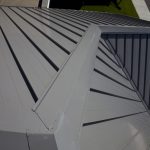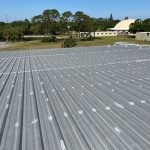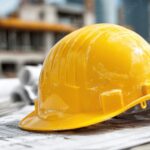 Newspaper headlines from across the country reported extreme winter conditions with snowfall records being broken on a daily basis in the last part of 2009. From the Midwest across to the Mid-Atlantic, up to New England, single day, monthly an yearly records were not only being broken, but shattered. The mercury in thermometers plunged to record lows in parts of the country like Florida where winter weather conditions are not typically seen.
Newspaper headlines from across the country reported extreme winter conditions with snowfall records being broken on a daily basis in the last part of 2009. From the Midwest across to the Mid-Atlantic, up to New England, single day, monthly an yearly records were not only being broken, but shattered. The mercury in thermometers plunged to record lows in parts of the country like Florida where winter weather conditions are not typically seen.
Extreme winter conditions stranded thousands of travelers at airports, shut down interstates and caused class cancellations at places like the University of Wisconsin, a first in nearly 45 years. Some entrepreneurs in Oklahoma took advantage of the severe winter conditions by creating a t-shirt that read, “I survived the Snowklahoma 2009 Blizzard.”
Year in and year out, Northern regions always have a demand for snow retention systems.However, many of the southern states affected by this storm were places where snowfall barely reaches a few inches per year.With this in mind, the metal building industry should install snow retention on building seven in regions of the country that typically have lower snow accumulation.
 2009-10 Snow Fall Records and Stats (YTD):
2009-10 Snow Fall Records and Stats (YTD):
- 66 daily snow records tied or broken
- 21 monthly snow total recordstied or broken
- 65 percent of the country experienced weather typically only seen by 25 percent of the country
- States (regions) with records set: Nebraska,Illinois, Wisconsin, Washington, D.C., Philadelphia, Maryland, and many more …
- Washington, D.C.’s largest snow accumulation in 70 years
- 20 inches recorded in Flagstaff, Ariz., four times the record of 5 inches set in 1956
- Philadelphia experienced largest December snow fall in 100 years
- 23.6 inches of snow has already fallen in Charlottesville, N.C. 17.2 inches is the average for an entire season
- 16 inches of snow fell in eastern Kentucky
- Parts of Texas recorded snowfall as high as 9 inches
- Parts of Oklahoma recorded 15 inches of snowfall
*Data collected from various online sources
With these unavoidable facts in mind there is no question reports of damage to building structures will emerge. “A storm of this magnitude that drops snow in areas where yearly snowfall only reaches a few inches magnifies the need for buildings to be protected with properly designed snow retention systems,” stated Keith Lipps, vice president of marketing for S-5!, Colorado Springs,Colo. “This extreme snow storm will cause building owners in these regions to invest in snow retention systems, rather than forgoing them and paying for damaged gutters, or have an unsafe building to enter and exit.”
 Each major snowstorm has a generally understood economic cost to those that typically experience the havoc snow causes. For example, airports can come to a screeching halt if caught in whiteout conditions. Planes cannot land or takeoff until the weather clears.There is no solution other than waiting the storm out. Buildings, on the other hand, are much different. Building owners in low snow regions are not going to factor in three gutter replacements a year or building closures due to falling rooftop snow and ice.
Each major snowstorm has a generally understood economic cost to those that typically experience the havoc snow causes. For example, airports can come to a screeching halt if caught in whiteout conditions. Planes cannot land or takeoff until the weather clears.There is no solution other than waiting the storm out. Buildings, on the other hand, are much different. Building owners in low snow regions are not going to factor in three gutter replacements a year or building closures due to falling rooftop snow and ice.
With 2009 in the history books and 2010 beginning, what can the metal building industry industry learn from the recent extreme blizzard conditions and how it can prevent millions of dollars in unnecessary damage to building structures? The answer is reasonably simple outfit buildings with a properly designed snow retention system.
Properly designed snow retention systems should factor in four key variables-roof slope, distance from eave-to-ridge, roof panel width and snow load. Each variable allows a calculation to be done to determine the loads that will be imposed on a snow retention system. An example calculation looks like this:
Roof Slope 0.3173
Snow Load 65 psf
Distance to ridge 55′
Panel Width 24″ (or 2)
Lbs/Clamp = 2,268 lbs
The solution for building owners, general contractors and architects is to use continuous, mechanically attached systems. Avoid systems that void roof panel manufacturers’ warranties,damage the roof paint finish or ones constructed from casted parts. Buildings should be prepared to handle rooftop snow and ice accumulation long before the winter storms seen in 2009 hit again.
Dan Florczykowski oversees Colorado Springs, Colo.-based S-5! sales and assists with marketing activities for LMCurbs, Longview, Texas. Visit www.lmcurbs.com or www.s-5.com for more information.






